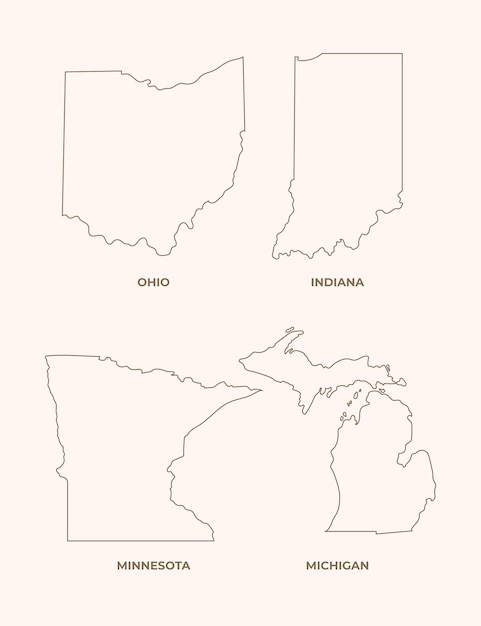Discover Fascinating Indiana State Facts

Did you know that Indiana is home to the Indianapolis 500, the world’s largest single-day sporting event?
Indiana is often referred to as the Crossroads of America because many major highways intersect within the state.
The state of Indiana was named after the Native American tribe, the Indiana.
Indiana is famous for its corn production, and it ranks among the top corn-producing states in the U.S.
The official state bird of Indiana is the cardinal, which is known for its vibrant red feathers.
The first professional baseball game was played in Fort Wayne, Indiana in 1871.
Indiana is the birthplace of popcorn, with the world’s largest popcorn festival held annually in Marion, Indiana.
The iconic motorcycle brand, Harley-Davidson, was founded in Indiana in 1903.
Indiana is home to the world’s largest children’s museum, located in Indianapolis.
The state tree of Indiana is the tulip tree, known for its beautiful yellow blossoms.
Abraham Lincoln spent a significant portion of his childhood in Indiana, where he grew up in a log cabin.
Indiana was the first state to implement a state-wide basketball tournament.
The Indianapolis Motor Speedway, located in Indiana, is the largest sports venue in the world.
Indiana has more miles of Interstate highway per square mile than any other state.
The state insect of Indiana is the firefly, which is known for its bioluminescent glow.
Discover Fascinating Indiana State Facts part 2
The state flag of Indiana features a torch representing liberty and enlightenment.
Indiana is famous for its limestone quarries and is often called the Limestone Capital of the World.
The Children’s Museum of Indianapolis has the largest water clock in North America.
Indiana is home to many Amish communities, known for their traditional way of life and craftsmanship.
The Indiana Dunes National Park is considered one of the most biodiverse areas in the Midwest.
Indiana is known for its Hoosier hospitality, a term used to describe the friendly and welcoming nature of its residents.
The first professional basketball game was played in Indiana in 1896.
The state mammal of Indiana is the white-tailed deer, commonly found throughout the state.
The Indianapolis 500 race has been held annually since 1911, making it the longest-running automobile race in the U.S.
Indiana has a rich agricultural history and is a leading producer of soybeans, tomatoes, and poultry.
The Indiana state motto is The crossroads of America.
The world’s largest water wall, measuring 240 feet long, is located in Indiana.
The largest historical reenactment in the U.S., the Feast of the Hunters’ Moon, takes place in Indiana each year.
Indiana is home to the largest contiguous National Historic Landmark District in the country, located in Madison, Indiana.
The state fish of Indiana is the northern pike, a popular game fish found in many of the state’s lakes and rivers.
Indiana is home to several top-ranked universities, including Purdue University and Indiana University.
Indiana ranks among the top states in the production of mint, used for making gum, candy, and breath mints.
The Indiana State Fair, one of the oldest state fairs in the U.S., attracts over one million visitors each year.
The Indy 500 race is known for its tradition of drinking milk in victory lane, dating back to the 1930s.
The state gemstone of Indiana is the Salem limestone, which has been used in many famous buildings, including the Empire State Building and the Pentagon.
Indiana is home to the largest free-standing high school gymnasium in the U.S.
The state reptile of Indiana is the painted turtle, commonly found in the state’s rivers and lakes.
The state flower of Indiana is the peony, known for its large, fragrant blooms.
The iconic board game, Monopoly, was invented by an Indiana native, Charles Darrow.
Indiana is known for its vibrant arts scene, with many theaters, galleries, and music venues throughout the state.
The Indiana state song is On the Banks of the Wabash, Far Away, written by Indiana native Paul Dresser.
Indiana has a rich basketball tradition, with the Indiana Pacers and the Indiana Hoosiers being well-known teams in the sport.
The state fossil of Indiana is the brachiopod, a marine organism that lived millions of years ago.
Indiana has a diverse landscape that includes both flat plains and rolling hills.
The Indiana State Capitol, located in Indianapolis, is known for its distinctive neoclassical architecture.

